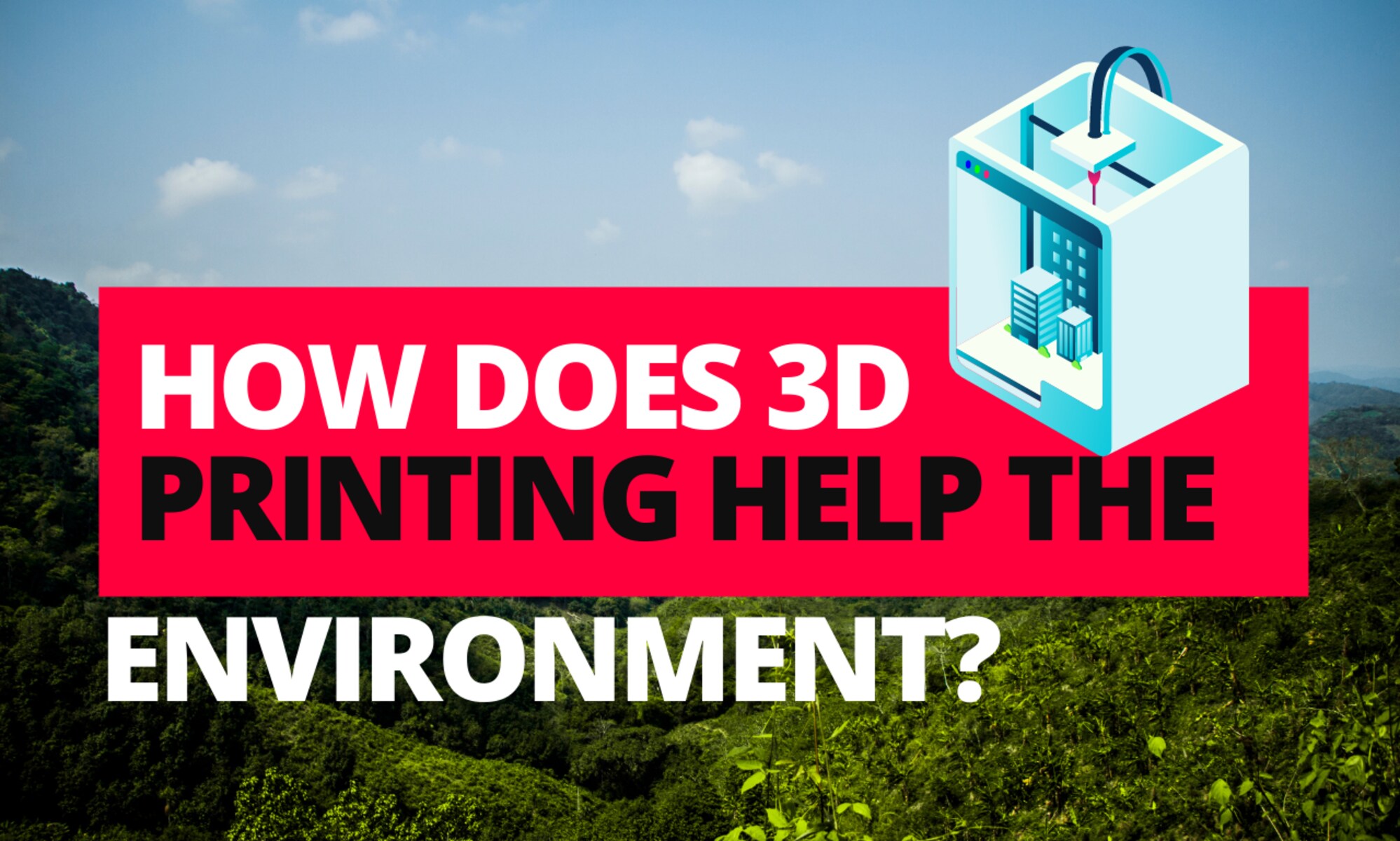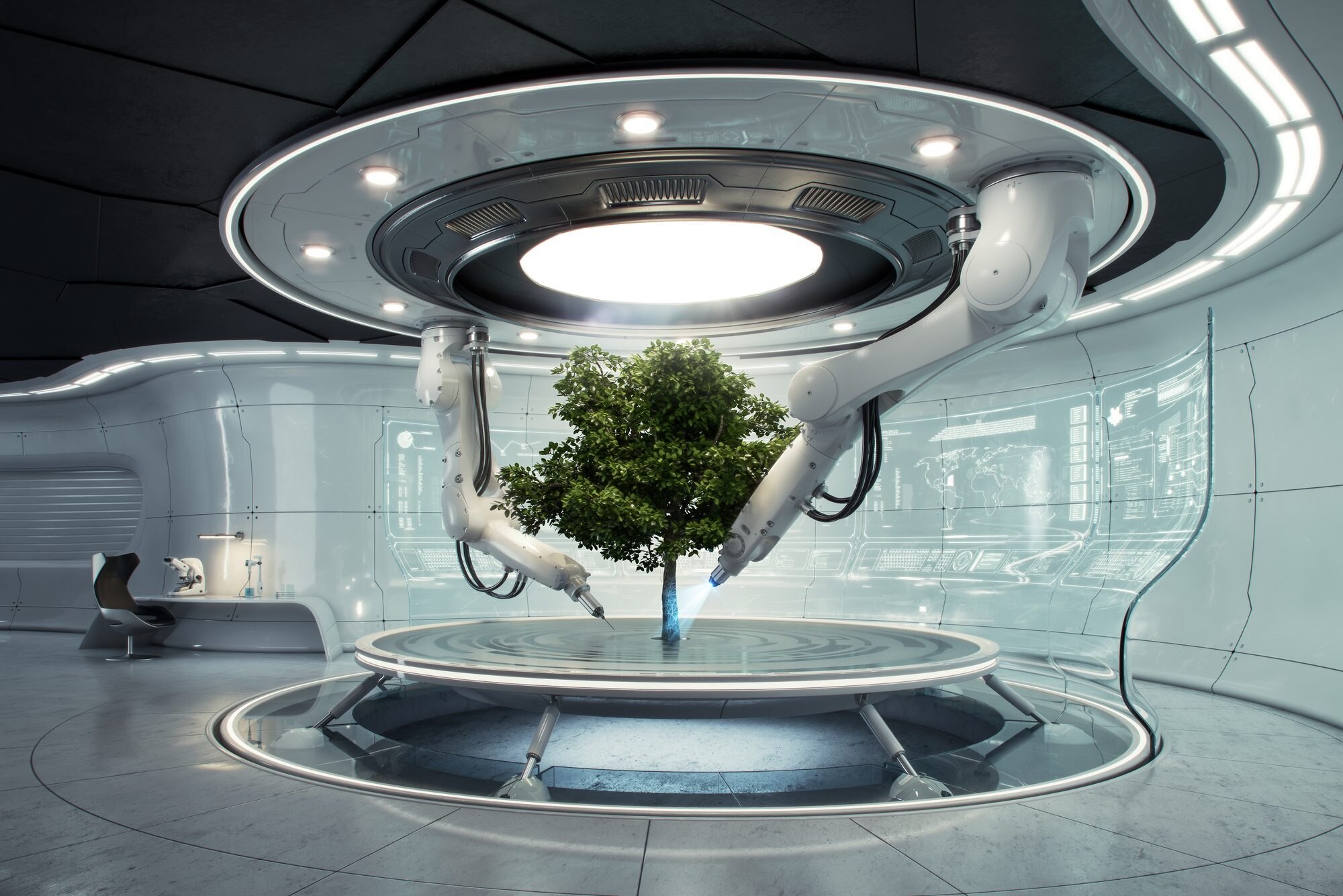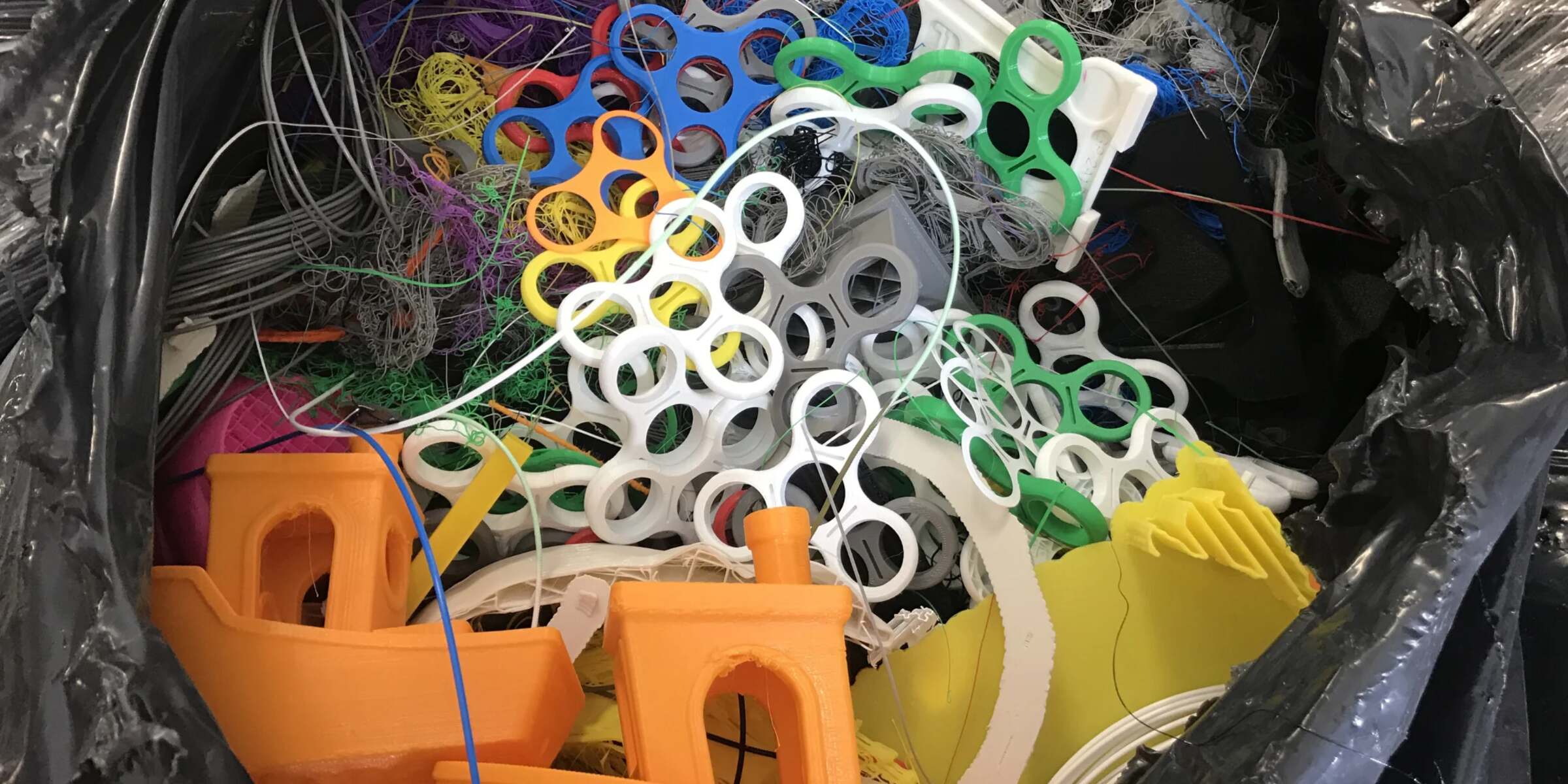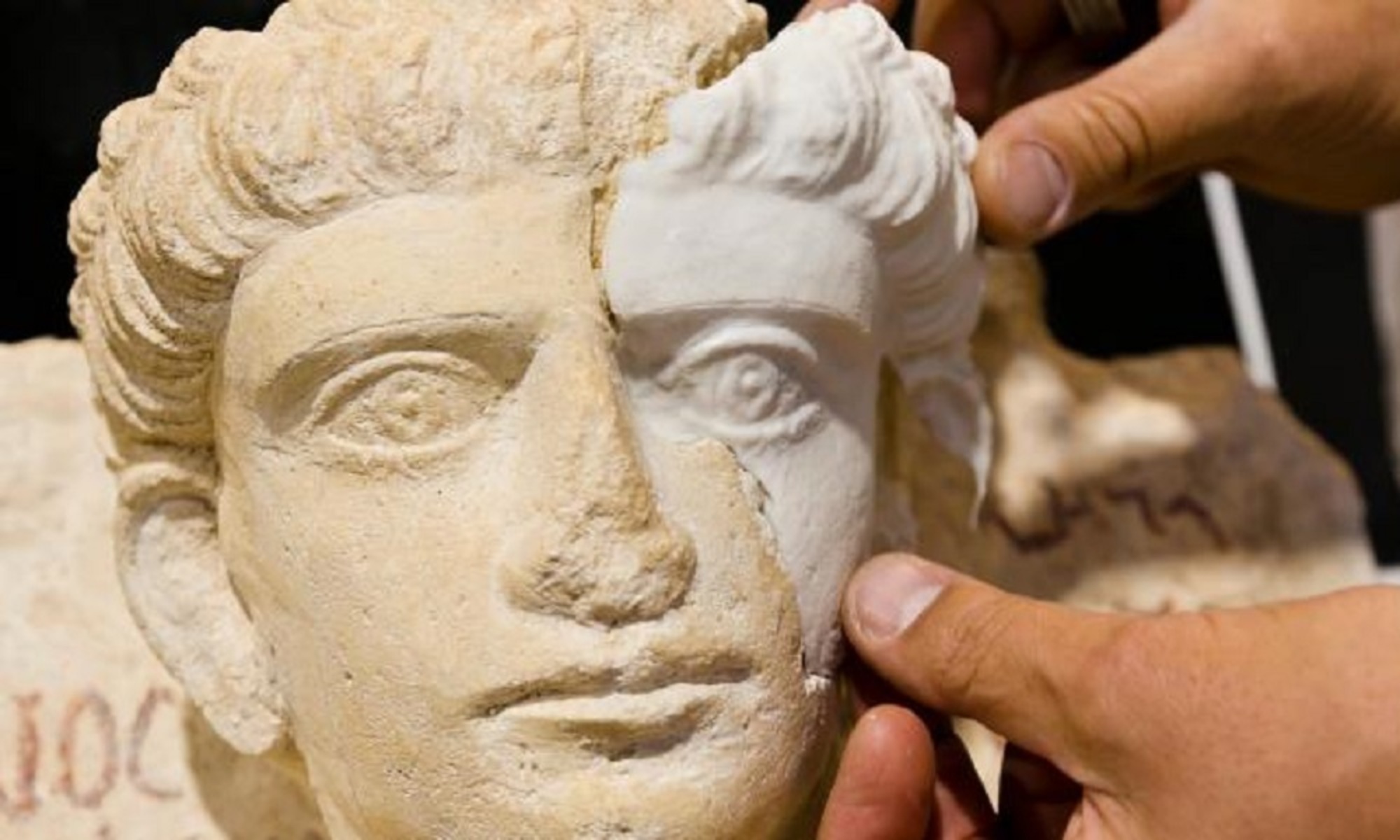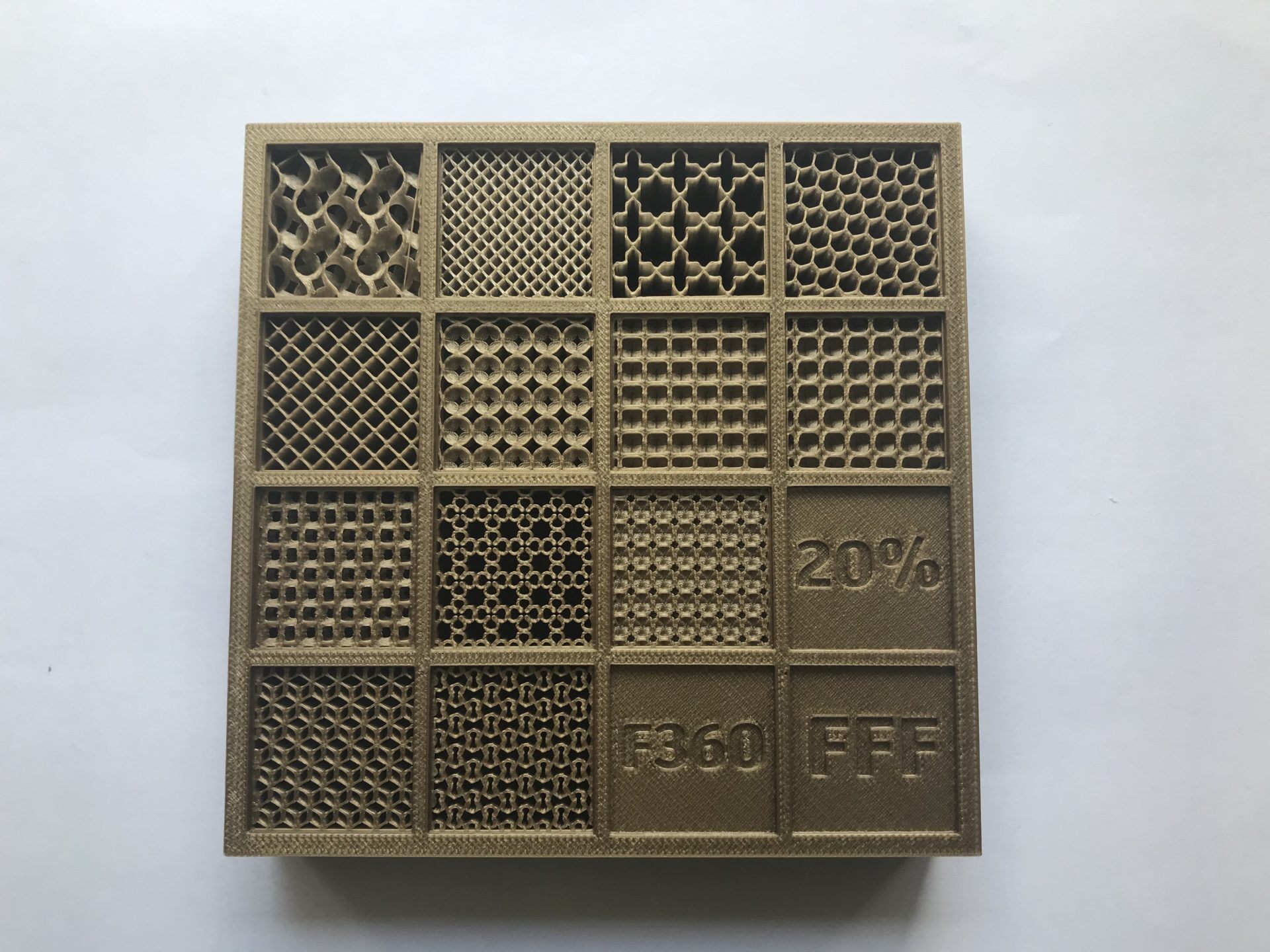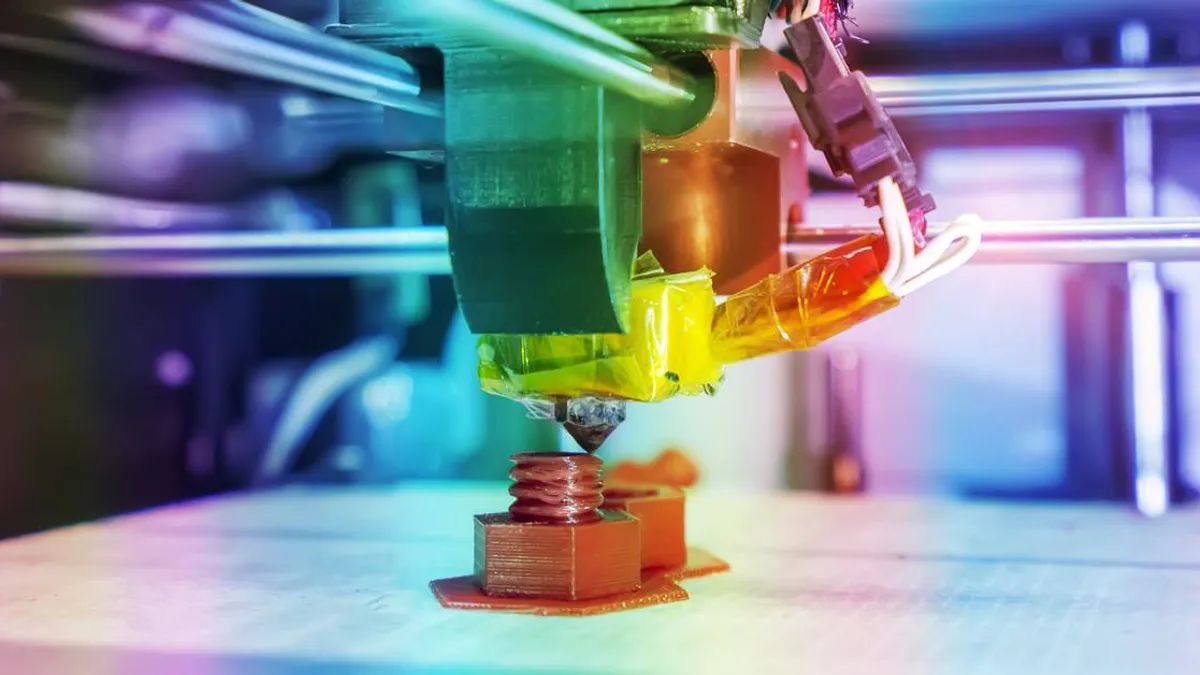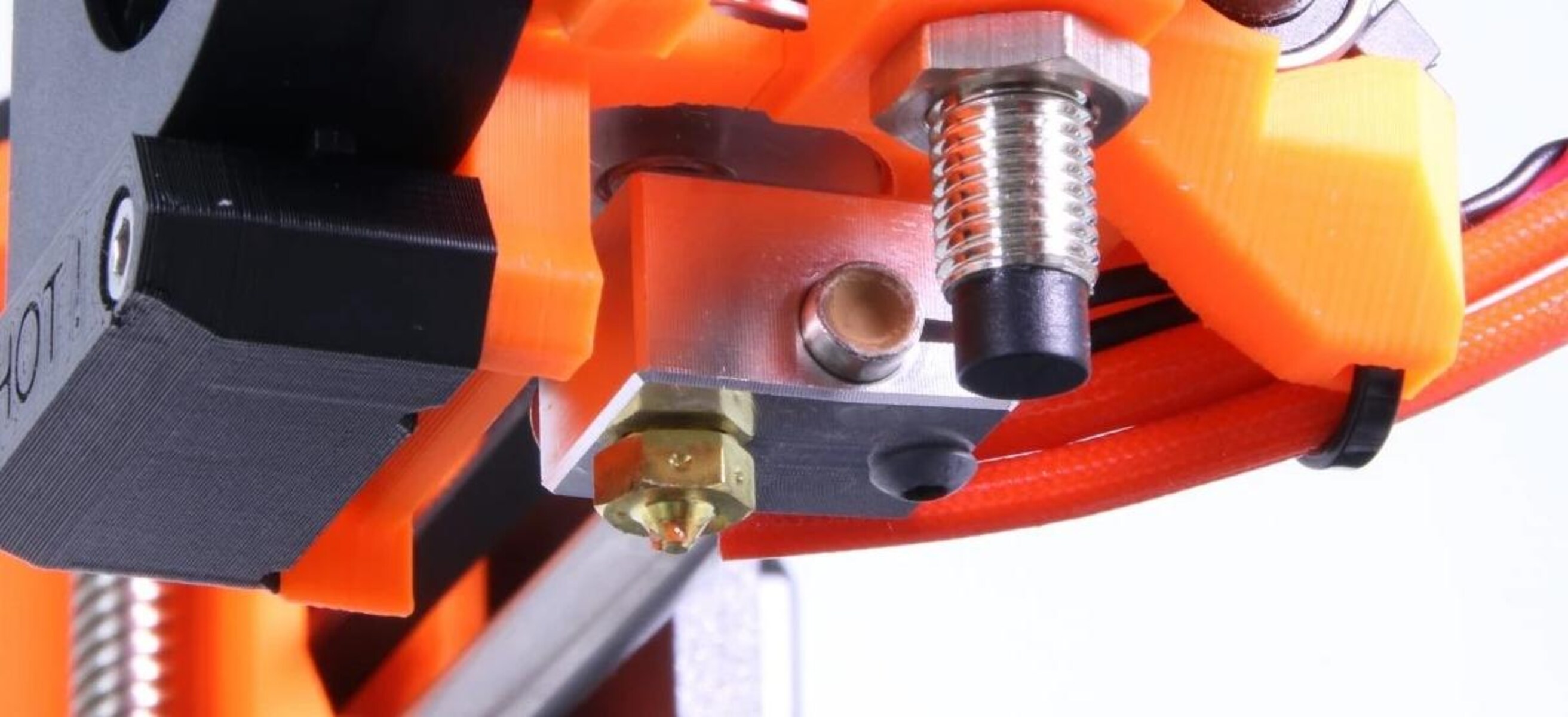Introduction
Over the past decade, 3D printing has emerged as a groundbreaking technology with vast applications in various industries. One field where the impact of 3D printing is increasingly evident is conservation. By harnessing the power of this innovative technology, conservationists and researchers are finding new and effective ways to preserve our natural and cultural heritage.
3D printing, also known as additive manufacturing, allows the creation of three-dimensional objects by layering materials based on digital designs. This technique has revolutionized traditional manufacturing processes and has opened up a world of possibilities in the conservation sector.
With 3D printing, researchers can now recreate historical artifacts, replicate endangered species, develop customized tools and equipment, and support sustainable use of natural resources. This transformative technology offers both practical and sustainable solutions to some of the pressing challenges faced by conservationists around the world.
This article explores the incredible advancements that have been made in conservation through the use of 3D printing. We will delve into the various applications of 3D printing in the field of conservation and examine the benefits and challenges associated with this innovative technology. Furthermore, we will highlight specific case studies that illustrate how 3D printing has been utilized in conservation efforts and discuss the future implications and possibilities of this technology in preserving our planet’s biodiversity and historical heritage.
Let us now delve into the exciting world of 3D printing in conservation and discover how this technology is shaping the future of preservation and sustainability.
Applications of 3D Printing in Conservation
3D printing technology has brought forth a wide array of applications in the field of conservation, revolutionizing how we approach the preservation of our natural and cultural heritage. Let’s explore some of the key applications of 3D printing in conservation:
-
Historical Artifact Restoration
One of the most exciting applications of 3D printing in conservation is the restoration of historical artifacts. Traditional restoration methods often involve extensive manual labor and the use of chemical substances. However, with 3D printing, damaged or missing parts of historical artifacts can be meticulously recreated, seamlessly blending with the original object. This enables conservators to restore and preserve delicate artifacts without compromising their authenticity.
-
Replication of Endangered Species
With the alarming decline of species worldwide, conservationists are using 3D printing to replicate endangered species. By creating precise models based on intricate scans of living organisms, scientists can raise awareness about the importance of biodiversity and study the anatomy and behavior of endangered species in a non-invasive manner. Additionally, these 3D printed replicas can be used for educational purposes and public exhibitions, allowing people to get up close and personal with endangered species.
-
Conservation of Natural Resources
Conservation efforts often rely on the sustainable use of natural resources. 3D printing plays a vital role in this aspect by reducing the need to extract and manufacture new materials. With the ability to use recycled or biodegradable materials as printing filaments, 3D printing promotes the circular economy, minimizing waste and reducing the carbon footprint associated with traditional manufacturing methods.
-
Customized Tools and Equipment
In the conservation field, having specialized tools and equipment is essential for various tasks, such as field research and artifact handling. 3D printing enables the creation of customized tools and equipment tailored to specific conservation needs. From delicate tweezers for precise artifact handling to weather-resistant camera housings for capturing biodiversity data in harsh environments, 3D printing allows conservationists to have the right tools for the job.
These applications only scratch the surface of what 3D printing offers to the field of conservation. The ability to quickly and affordably produce detailed replicas, prototypes, and customized solutions is transforming the way conservation is approached, leading to more effective and sustainable preservation practices.
Historical Artifact Restoration
Restoring and preserving historical artifacts is a delicate process that often requires careful craftsmanship and meticulous attention to detail. 3D printing has revolutionized this aspect of conservation by providing innovative solutions for restoring damaged or missing parts of historical objects.
Traditional restoration methods often involve manual labor and the use of materials that may not seamlessly blend with the original artifact. However, with 3D printing, conservators can recreate missing or damaged parts with astonishing accuracy. By utilizing high-resolution scans and digital modeling, they can reproduce intricate details that match the original piece, making it difficult to distinguish the restored areas from the original ones.
One of the significant advantages of 3D printing in historical artifact restoration is the ability to minimize the invasive procedures commonly associated with traditional restoration techniques. Instead of utilizing chemicals or aggressive measures that can alter the artifact’s original composition, conservators can use 3D printing to create non-invasive replicas or molds that capture the precise details of the missing or damaged parts.
During the restoration process, conservators can experiment with different materials and techniques without compromising the original artifact. They can test various printing filaments, finishes, and coatings to achieve the best possible outcome while ensuring that the restored parts seamlessly integrate with the rest of the artifact.
Furthermore, 3D printing is not limited to reproducing missing parts; it can also aid in the restoration of intricate surface details. For instance, if an artifact has suffered from erosion or fading of intricate patterns, conservators can employ 3D printing to recreate the original surface texture. This technology allows for maximum precision, resulting in the restoration of the artifact’s original aesthetic appeal while preserving its historical integrity.
Another advantage of 3D printing in historical artifact restoration is the ability to create exact replicas for research and educational purposes. Replicas can be used in exhibitions, allowing the public to engage with historical objects that are otherwise too fragile or rare to be on display. Researchers can utilize these replicas to conduct further studies, analyze the artifact’s structure, or explore alternative restoration approaches without risking damage to the original piece.
Overall, 3D printing has revolutionized the field of historical artifact restoration. It provides new possibilities for conservators to preserve and restore delicate objects while respecting their historical significance and integrity. With this technology, we can ensure that future generations have the opportunity to experience and appreciate our rich cultural heritage.
Replication of Endangered Species
As the world faces the devastating effects of climate change and habitat loss, the conservation of endangered species has become paramount. 3D printing technology offers a remarkable solution by allowing the replication of endangered species for research, education, and awareness purposes.
Through 3D scanning and printing techniques, scientists and conservationists can create accurate and detailed replicas of endangered species. These replicas serve as invaluable tools for studying the anatomy, behavior, and ecological interactions of these species without disturbing or endangering their natural populations.
One of the primary applications of 3D printed replicas is in the field of education and public outreach. Museums and educational institutions can display these lifelike models to raise awareness about the importance of biodiversity and the threats faced by endangered species. They provide a tactile and visual experience that helps connect people to these species and fosters a sense of empathy and concern for their survival.
Additionally, these replicas can be used for educational programs, allowing students and researchers to examine and study the intricate details of endangered species up close. By being able to handle and explore these replicas, individuals can gain a deeper understanding of the species’ characteristics and the challenges they face in their natural habitats.
3D printed replicas of endangered species also have practical applications in scientific research. They allow scientists to conduct experiments and tests, such as exploring the effects of certain environmental conditions on specific species without risking harm to live animals. These replicas enable researchers to gather valuable data that contributes to our understanding of endangered species and aids in the development of effective conservation strategies.
Furthermore, 3D printing technology can play a role in the preservation and restoration of natural history collections. Museums and institutions that house specimens of endangered species can create replicas to replace fragile or deteriorating specimens. This ensures that the physical representation of the species is preserved for future generations, even if the original specimens cannot be exhibited due to their delicate condition.
It is important to note that creating 3D printed replicas does not replace the efforts to protect and conserve natural habitats or directly contribute to the population recovery of endangered species. However, it serves as a valuable tool in raising awareness, advancing scientific knowledge, and inspiring action towards conservation efforts.
Through the replication of endangered species, 3D printing technology contributes to public engagement, scientific research, and the overall conservation goals aimed at preserving our planet’s rich biodiversity.
Conservation of Natural Resources
As the world becomes increasingly aware of the need for sustainable practices, the conservation of natural resources has become a top priority. 3D printing technology plays a significant role in reducing waste, promoting recycling, and minimizing the carbon footprint associated with traditional manufacturing methods.
One of the key advantages of 3D printing is its ability to utilize recycled or reclaimed materials as printing filaments. Plastic waste, for example, can be processed and transformed into printing filaments, reducing the need for new production and preventing it from ending up in landfills or oceans. By incorporating recycled materials into the printing process, 3D printing contributes to the principles of the circular economy, where resources are recycled and reused to their fullest potential.
Furthermore, 3D printing allows for precise and customized design, eliminating the need for excessive material consumption. Traditional manufacturing often involves creating objects by subtracting or molding materials, resulting in a significant amount of waste. In contrast, with 3D printing, objects are built layer by layer, only using the materials necessary for the final product. This approach minimizes waste and reduces the environmental impact associated with excessive material consumption.
Another noteworthy aspect of 3D printing is the potential for localized production. In conventional manufacturing, products are often mass-produced in centralized factories and then transported to various locations, resulting in long supply chains and increased energy consumption. With 3D printing, objects can be created on-site or within local communities, eliminating the need for long-distance transportation. This localized production reduces carbon emissions and contributes to a more sustainable and efficient distribution system.
Additionally, 3D printing enables the creation of complex geometries, lightweight structures, and optimized designs, further reducing material usage. By using software and algorithms to optimize the shape and structure of objects, engineers and designers can achieve the desired functionality while minimizing the amount of material required. This not only conserves natural resources but also reduces energy consumption during production and transportation.
Despite these benefits, it is essential to consider the environmental impact of the materials used in 3D printing. Some printing materials, such as certain types of plastics, may still pose environmental challenges, including the emission of harmful fumes during printing or difficulties in recycling the printed objects. However, ongoing research and development in eco-friendly printing materials are addressing these concerns and paving the way for more sustainable 3D printing practices.
Through the conservation of natural resources, 3D printing provides a promising alternative to traditional manufacturing methods. By utilizing recycled materials, reducing waste, and enabling localized production, this technology contributes to a more sustainable future.
Customized Tools and Equipment
In the field of conservation, having access to specialized tools and equipment is essential for various tasks, ranging from field research and data collection to artifact handling and restoration. 3D printing technology offers a game-changing solution, enabling the creation of customized tools and equipment tailored to the unique needs and requirements of conservationists.
One of the significant advantages of 3D printing in this context is the ability to quickly and affordably produce custom-designed tools. Traditional manufacturing processes often involve time-consuming and costly production methods, such as mold-making or CNC machining, which may not be feasible for one-of-a-kind or niche tools. However, with 3D printing, conservators can design and produce tools in-house, eliminating the need for outsourcing or relying on standard, off-the-shelf options.
Conservationists can leverage 3D printing to create tools that are specifically designed for delicate operations, such as artifact handling or sample collection. By designing tools with precise dimensions and features according to the specific requirements of a task, conservators can ensure a higher level of precision and minimize the risk of damage to valuable objects.
Additionally, 3D printing allows for the production of lightweight tools and equipment, reducing physical strain during fieldwork. For instance, conservationists working in remote or rugged environments can design and print lightweight camera mounts, specimen containers, or field kits that are both durable and ergonomic. This not only improves the efficiency of data collection but also minimizes the physical impact on researchers in challenging conditions.
Customized lab equipment is also within reach through 3D printing. Researchers can design and print specialized holders, clamps, or fixtures to secure specimens during analysis or conduct experiments in controlled laboratory settings. These custom-made pieces can enhance productivity and accuracy in research, eliminating the limitations of generic or commercially available lab equipment.
3D printing also enables the development of innovative tools and equipment that may not have been available otherwise. Conservationists can collaborate with designers and engineers to create novel solutions to address specific challenges encountered in their fieldwork. This collaborative approach fosters creativity and adaptability, leading to the development of unique tools and solutions tailored to the specific needs of conservationists.
However, it is essential to consider the materials used in 3D printing when designing tools and equipment. Depending on the application, strength, flexibility, or temperature resistance may be crucial factors to consider. Careful selection of appropriate printing materials ensures that the tools and equipment can withstand the demands of conservation tasks without compromising functionality or durability.
Through 3D printing, conservationists gain access to an innovative means of producing custom-designed tools and equipment. The ability to create unique and tailor-made solutions enhances precision, productivity, and ergonomics in the field of conservation.
Benefits and Challenges of 3D Printing in Conservation
The increasing adoption of 3D printing in the field of conservation brings with it a range of benefits and challenges that need to be considered. Understanding these factors is vital for effectively harnessing the potential of 3D printing in conservation efforts.
One of the significant benefits of 3D printing is its ability to provide cost-effective solutions. Traditional manufacturing methods often involve high costs, especially for producing custom-designed or one-of-a-kind objects. 3D printing eliminates the need for expensive molds or production processes, allowing for more affordable customization and replication of objects. This cost-effectiveness opens up opportunities for conservationists with limited budgets or resource constraints to access and utilize this technology.
Furthermore, 3D printing facilitates rapid prototyping and iteration. Conservationists can quickly create prototypes of replicas or customized tools and equipment for testing and evaluation. This iterative process allows for refinement and improvement, ensuring that the final product meets the desired specifications and functions optimally.
Another significant benefit is the sustainability aspect of 3D printing. By utilizing recycled or renewable materials as printing filaments, 3D printing promotes the reuse of resources and reduces waste. Furthermore, localized production and on-demand manufacturing contribute to a more efficient and environmentally friendly supply chain, reducing transportation-related carbon emissions.
Customization is a key advantage of 3D printing in conservation. The ability to design and produce custom-made replicas, tools, and equipment tailored to specific requirements enhances precision and usability in the field. This level of customization allows conservationists to address unique challenges and ensures that the objects and tools employed are fit for purpose.
Despite the numerous benefits, there are also challenges to consider regarding 3D printing in conservation. One challenge is the need for expertise in digital modeling and design. Conservationists must acquire the necessary skills to create accurate and detailed digital models. Collaboration with designers and engineers can help overcome this challenge by tapping into expertise in 3D modeling and design.
Another challenge lies in the validation and verification of 3D printed replicas. Ensuring that the printed object accurately represents the original artifact or species requires meticulous attention to detail and validation through scientific methods. Advances in digital scanning techniques and collaboration with experts in the field can help address this challenge and improve the accuracy and reliability of 3D printed replicas in conservation efforts.
Material selection is also an important consideration. With a wide range of printing filaments available, conservationists must choose materials that are durable, sustainable, and compatible with the specific application. Consideration must be given to the long-term integrity and stability of 3D printed objects, particularly when used in restoration or exhibition contexts.
Addressing these challenges through knowledge-sharing, collaboration, and advancing technological capabilities will help unlock the full potential of 3D printing in conservation. With continued progress, the benefits of cost-effectiveness, customization, and sustainability can be fully realized, contributing to more effective conservation practices and the preservation of our natural and cultural heritage.
Case Studies: Examples of 3D Printing in Conservation
Several remarkable case studies highlight the innovative and impactful use of 3D printing in conservation efforts. These examples demonstrate the diverse applications of this technology and its role in preserving our natural and cultural heritage.
1. The Great Barrier Reef Corals: The Great Barrier Reef, one of the world’s most iconic ecosystems, is under threat due to climate change and coral bleaching. To aid in conservation and research efforts, scientists have utilized 3D printing to create scaled replicas of coral formations. These replicas allow researchers to study the intricate structures and behavior of corals in controlled environments, facilitating experiments to understand their responses to various stressors and develop targeted conservation strategies.
2. The Dinosaur Restoration Project: In 2016, a collaborative project involving researchers, paleontologists, and 3D printing experts led to the restoration of an almost-complete dinosaur skeleton. The missing bones were recreated using 3D printing technology based on the existing skeletal remains. This groundbreaking approach allowed for the creation of accurate and anatomically correct replicas, replacing the missing sections and enabling a more complete representation of the dinosaur for research and educational purposes.
3. The Notre-Dame Cathedral Restoration: In 2019, a devastating fire engulfed the Notre-Dame Cathedral in Paris, causing severe damage to its architectural elements. As part of the restoration efforts, 3D scanning and printing technology were employed to replicate intricate gargoyles, stained glass windows, and other intricate details. These 3D printed replicas aided in the reconstruction process, providing reference points for artisans as they worked to recreate the original features while preserving the historical integrity of the cathedral.
4. The Elephant Tusk Identification: Illegal ivory trade poses a significant threat to elephant populations worldwide. To combat this, researchers have employed 3D scanning and printing technology to create replicas of elephant tusks. These replicas can be used by law enforcement agencies and conservation organizations to aid in the identification and tracking of illegal ivory. By comparing confiscated tusks to 3D printed replicas, authorities can gather evidence and support prosecution efforts against wildlife traffickers.
5. The Apollo 11 Command Module Hatch: The Apollo 11 mission was a milestone in human space exploration, and preserving its historical artifacts is crucial. In one notable case, the hatch of the Apollo 11 command module, which was lost after the mission, was recreated using 3D printing. The replica hatch accurately matched the original design and materials, allowing for further study and restoration work while preserving the historical integrity of the iconic spacecraft.
These case studies exemplify the versatility and power of 3D printing in conservation. From coral reef preservation to historical artifact restoration, 3D printing provides innovative solutions that aid in research, education, and the protection of our planet’s natural and cultural treasures.
Future Implications and Possibilities of 3D Printing in Conservation
The rapid advancements in 3D printing technology hold immense promise for the future of conservation efforts. As the field continues to evolve, its implications and possibilities are expanding, offering exciting opportunities for the preservation and sustainable management of our natural and cultural heritage.
1. Improved Replication and Restoration: As 3D scanning and printing technologies advance, the accuracy and fidelity of replicated objects will continue to improve. With more sophisticated scanning techniques and advanced materials, conservators will be able to create replicas that closely mimic the original artifacts or species. This enhanced replication capability will further support research, education, and restoration efforts, providing unprecedented access to rare or fragile specimens for study and display.
2. Collaborative Conservation Efforts: 3D printing has the potential to bring together experts from different fields to tackle conservation challenges collaboratively. Conservationists, scientists, designers, engineers, and artists can work together to develop innovative solutions, exchange knowledge, and share resources. This interdisciplinary approach will foster creativity, accelerate progress, and result in more effective conservation strategies and practices.
3. Customization for Specific Conservation Needs: Continued developments in 3D printing technology will enable even greater customization for conservationists. The ability to design and produce tools, equipment, and replicas that are tailored to specific conservation needs will enhance efficiency and effectiveness in the field. From intricate restoration tools to replicas of endangered species, customization will enable conservationists to address unique challenges and refine their approaches based on specific requirements.
4. Remote Applications in Conservation: 3D printing opens up opportunities for conservation efforts in remote and resource-limited areas. With compact and portable 3D printers, conservationists can bring the technology directly to the field, reducing the need for extensive transportation and logistics. This accessibility empowers local communities and researchers to engage in conservation work, promoting grassroots efforts and localized solutions for preserving biodiversity and cultural heritage.
5. Integration with Other Technologies: The integration of 3D printing with other emerging technologies such as 3D scanning, artificial intelligence, and virtual reality holds significant potential for enhancing conservation practices. The combination of these technologies can improve the accuracy and efficiency of scanning processes, enhance the realism of virtual exhibits, and enable more immersive educational experiences. This integration will revolutionize how we document, study, and communicate about our natural and cultural assets.
It is important to note that the widespread adoption of 3D printing in conservation will require continued research, development, and collaboration. The refinement of printing materials, advancement in scanning techniques, and the establishment of best practices are critical for optimizing the effectiveness and sustainability of 3D printing applications in the long term.
As we embrace the possibilities of 3D printing, it is crucial to maintain ethical considerations. The appropriate and responsible use of 3D printing in conservation should prioritize the preservation of authenticity, respect cultural sensitivities, and adhere to legal frameworks governing the reproduction and distribution of copyrighted or sensitive materials.
Overall, the future implications of 3D printing in conservation are promising. With ongoing advancements and collaboration, this technology has the potential to revolutionize how we preserve, study, and appreciate our natural and cultural heritage for generations to come.
Conclusion
3D printing has undoubtedly emerged as a transformative technology in the field of conservation. Its applications, ranging from historical artifact restoration to the replication of endangered species, hold immense potential for the preservation and sustainability of our natural and cultural heritage. The benefits of 3D printing, such as cost-effectiveness, customization, and sustainability, have revolutionized traditional approaches and opened up new avenues for conservationists and researchers.
By leveraging 3D printing, conservators can restore historical artifacts with precision, recreate missing or damaged parts seamlessly, and preserve the authenticity of the originals. The replication of endangered species through 3D printing raises awareness, enables scientific research, and aids in education, fostering a deeper understanding of biodiversity and conservation challenges.
3D printing also contributes to sustainable practices by utilizing recycled materials, minimizing waste, and reducing the carbon footprint associated with traditional manufacturing methods. This technology empowers conservationists to create customized tools and equipment, improving precision, efficiency, and safety in their work.
While numerous benefits exist, there are challenges to overcome, such as expertise in digital modeling, validation of replicas, and material selection. Addressing these challenges through collaboration, knowledge-sharing, and technological advancements will further unlock the potential of 3D printing in conservation.
As we look to the future, the possibilities of 3D printing in conservation are expanding. Advanced replication and restoration techniques, customization for specific conservation needs, and collaboration among different fields will continue to enhance conservation efforts. Integration with other emerging technologies will create even more immersive and interactive experiences, revolutionizing how we document, study, and communicate about our natural and cultural treasures.
However, it is essential to approach 3D printing in conservation with ethical considerations, respecting authenticity, cultural sensitivities, and legal frameworks. By doing so, we can ensure that this technology is harnessed responsibly and ethically for the long-term preservation and appreciation of our planet’s rich biodiversity and historical heritage.
In conclusion, 3D printing has revolutionized the field of conservation, offering innovative solutions, empowering customization, and promoting sustainability. By embracing the potential of this technology and addressing its challenges, we can pave the way for a future where our natural and cultural heritage is preserved, studied, and cherished with unprecedented precision and care.









